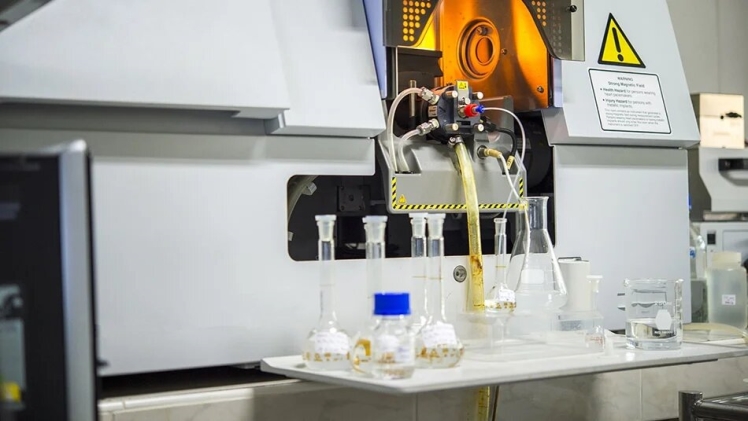Atomic Absorption Spectroscopy (AAS) is a method used to measure the concentration of elements in a sample by analyzing how atoms absorb light in a gaseous state. It is effective for metals and metalloids due to its sensitivity. Samples are atomized and exposed to light at a specific wavelength, with absorption proportional to concentration, enabling precise quantification.
AAS is applied in environmental analysis, clinical chemistry, food safety, and material science due to its accuracy. This blog will cover AAS principles, instrumentation, applications, and advancements.
Fundamentals of Atomic Absorption Spectroscopy
Understanding Agilent atomic absorption spectroscopy basics is vital for comprehending its applications in analytical chemistry. This section explores key AAS principles, including absorption spectroscopy, atomization processes, light interaction with atoms, and absorption’s link to element concentration.
Absorption Spectroscopy Principles
AAS relies on absorption spectroscopy, where atoms absorb specific wavelengths of light, inducing electronic transitions. This absorption quantifies light intensity reduction, offering insights into sample elemental composition.
Atomization Process in AAS
Atomization is pivotal in AAS, converting samples into free atoms for analysis. Techniques like flame, graphite furnace, and hydride generation are used. Flame atomization vaporizes samples through exposure to high-temperature flames, while graphite furnace heating occurs in graphite tubes. Hydride generation converts elements into volatile hydrides through chemical reactions.
Absorption of Light by Free Atoms
After atomization, free atoms in samples interact with incident light in AAS instruments. Atoms selectively absorb radiation at characteristic wavelengths, depending on electronic transitions. Absorption is influenced by atom quantity, light path length through the sample and light intensity.
Instrumentation of Atomic Absorption Spectroscopy
Atomic Absorption Spectroscopy (AAS) relies on precise instrumentation for accurate elemental analysis.
Components of an AAS Instrument
A standard AAS setup comprises essential components: light source, atomizer, monochromator, detector, and data processing unit. The light source emits radiation, the atomizer converts samples, the monochromator selects the analysis wavelength, and the detector measures light intensity. The data processing unit interprets detector output to determine elemental concentrations.
Atomizer Types: Flame, Graphite Furnace, and Hydride Generation
AAS utilizes various atomizers: flame, graphite furnace, and hydride generation systems. Flame atomizers vaporize samples with high-temperature flames, suitable for volatile elements. Graphite furnace atomizers heat samples in graphite tubes, offering high sensitivity and low detection limits.
Hydride generation systems convert elements into volatile hydrides, enabling analysis of non-volatile and refractory elements.
Light Sources and Detectors Used in AAS
Light sources and detectors are crucial for measuring light absorption by free atoms. Hollow cathode lamps (HCLs) are common light sources with narrow emission lines and high intensity. Photomultiplier tubes (PMTs) or photodiode arrays (PDAs) serve as detectors, ensuring accurate measurement of light absorption.
These detectors provide high sensitivity and wide dynamic range, essential for precise elemental quantification.
Sample Introduction Systems
Sample introduction systems ensure efficient sample delivery to the atomization zone. Flame, furnace, and hydride generation systems are common. Flame systems use nebulizers for liquid sample aerosol generation, while furnace systems use autosamplers for solid or liquid sample introduction.
Hydride generation systems produce volatile hydrides from samples through gas-liquid reactions, enhancing the accuracy and precision of AAS analysis.
The Vital Role of Atomic Absorption Spectroscopy
Atomic Absorption Spectroscopy (AAS) is vital across disciplines for precise elemental analysis. It detects pollutants in environmental monitoring, aids clinical diagnoses, ensures food safety, and characterizes materials in material science. AAS fosters scientific advancement and innovation.

